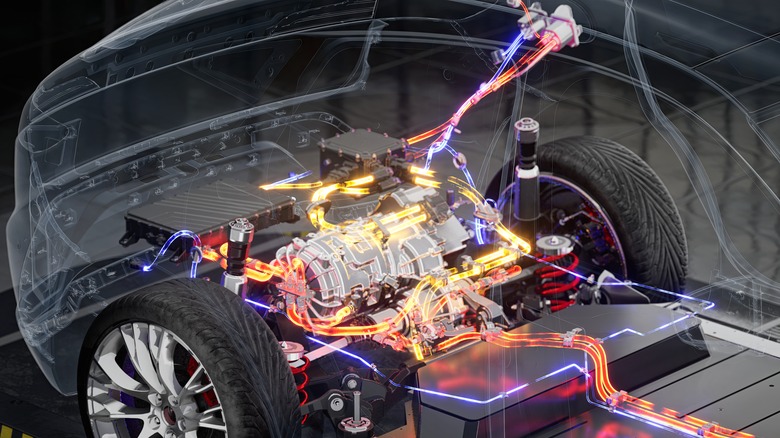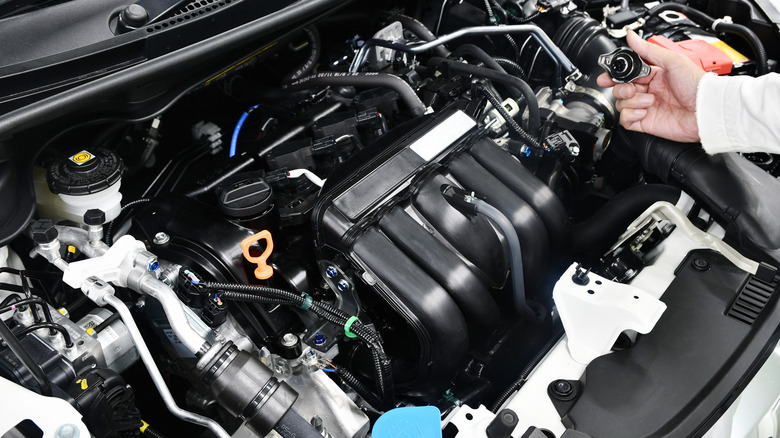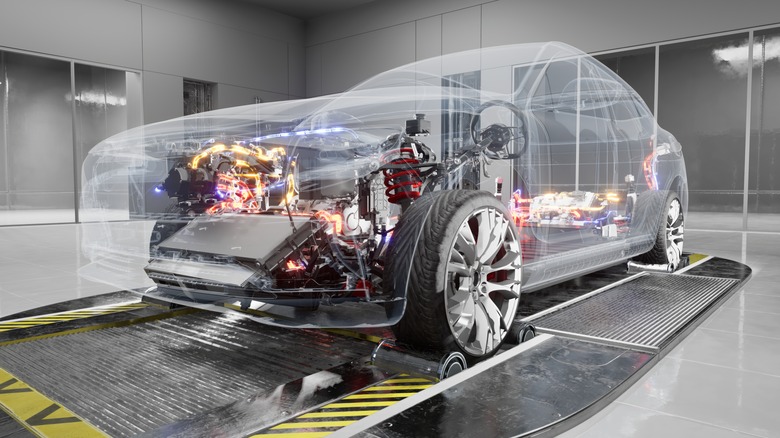
Sefa Ozel/Getty Images
By Brad Hill/
Many people, whether into cars or not, have heard the word «powertrain.» It’s a series of components within a vehicle that generates the necessary power to propel a car forward. It’s the single most important system within any vehicle.
If a car has an issue running, it’s usually connected to the powertrain in some way. With the popularity of electric vehicles rising, there’s some curiosity as to whether they contain a similar powertrain, or a more complex system compared to vehicles with internal combustion engines. On one hand, many might think that the powertrain is less complex in an EV because everything is electric, so the power must come from one component. However, if anyone has looked at the assembly of an EV, they might think it’s definitely more complex.
Pop the hood of some EVs, and they don’t look less complicated than ICE vehicles. They have thick tubes going from one component to another, and several large blocks that don’t look any different than a typical internal combustion engine. How different is an EV’s powertrain?
The basics of a gas vehicle’s powertrain

Dreamnikon/Getty Images
Simply by popping the hood of an ICE vehicle, it’s easy to see that it’s an incredibly complex system. While the technology for internal combustion engines has improved drastically since their inception, they’ve never really become less complex. From the starter and carburetor, to pistons and valves, an internal combustion engine contains thousands of components, many of which are part of the powertrain.
Included in an ICE vehicle’s powertrain are the engine, transmission, driveshaft, axles, and differentials. The engine is obviously the heart of it all, as that’s where everything begins. Through moving pistons, the engine generates immense amounts of energy and transmits it to the transmission, where it can send the appropriate amount of power to the wheels.
The axles do more than hold the wheels to the chassis of the vehicle; they rotate and transmit the power from the transmission to the wheels as well. Differentials help cars properly round corners, as they allow each wheel to spin at a different rate from each other.
EVs simplify their powertrain

Sefa Ozel/Getty Images
EVs generally don’t require as many moving parts as their gas-powered counterparts. In fact, EVs contain about half as many components as an ICE vehicle. It helps that most don’t even use a geared transmission. Instead of all the pistons and valves an ICE vehicle uses, EVs have batteries and an electric motor to get their wheels to move. In fact, there are a total of four components in an EV powertrain: The batteries, a DC-AC converter, the motor, and an onboard charger.
The batteries hold onto the power and transmit it to the converter, where it transforms DC power to AC power, which is then supplied to the motor. The motor converts all the electrical energy into mechanical energy, which propels the axles and wheels. While the onboard charger takes in AC electricity and converts it to DC before sending it to the battery, it also manages the current that flows into the batteries. That’s the entire powertrain.
All in all, there’s no argument that electric vehicles contain a simpler powertrain, which accounts for EVs requiring less maintenance than their gas-guzzling counterparts. Don’t buy into the various EV myths that circulate the rumor mill, as advancing technology is making EVs just as good to own as vehicles with internal combustion engines.